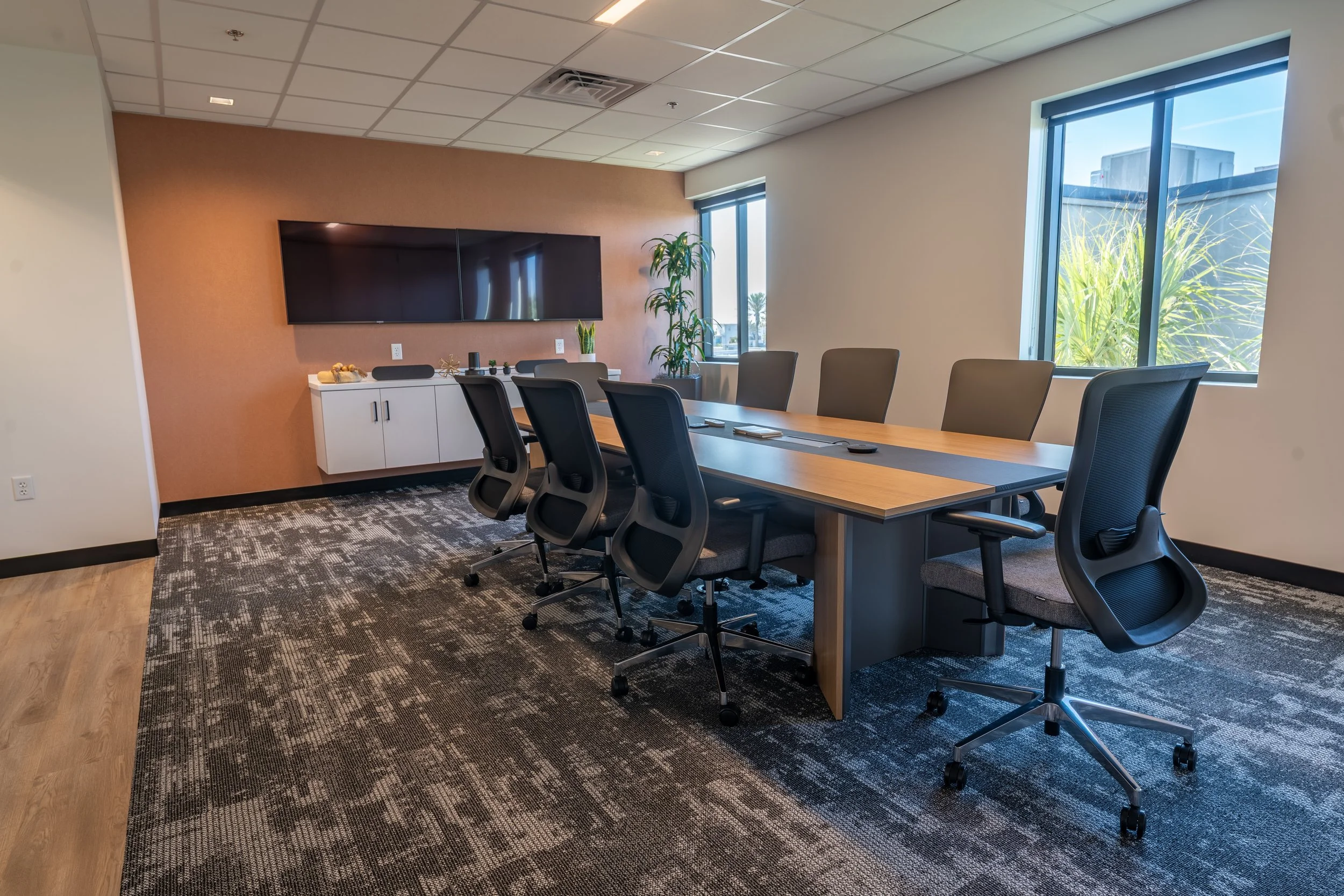Designing for Diversity: Inclusive Furniture and Layouts for Modern Offices
The modern workspace has evolved over the years. Once a boring and generic design, the office
has transformed into a more open, versatile, and free space. As employee needs change, so
does the importance of needing a workplace that is functional, welcoming, and inclusive for all.
Here at Interior Fusion, we know that inclusive design is not just a TikTok trend but rather a
requirement and foundational principle that supports individuals with all sorts of needs.
Learn more about what an inclusive office design means and the various ways you can
incorporate it into your existing workplace.
What is an Inclusive Office Design?
An inclusive office design is essential for creating a space for various needs and making
employees feel valued regardless of their abilities, age, gender, cultural background, and
neurodiversity. It is ensuring that every employee feels supported and comfortable in their
workspace so they can perform their best. Incorporating various elements that are inclusive
into your new or existing office environment can leave a huge impact on your employees,
leaving them feeling motivated and creative.
How to Start Designing an Inclusive Environment?
The main focus of an inclusive office design is employee wellbeing, whether that is addressing
physical limitations, working styles, or other needs. While it may be impossible to 100% fulfill
every single requirement, using a target group representing your workforce or directly asking
your employees how their current environment can be enhanced is a good start.
It is important not to draw too much attention to specific individuals or groups but to
incorporate inclusive elements into your design seamlessly.
How to Design for Physical Accessibility
Every workplace must comply with The Americans with Disabilities Act (ADA) and are required
to have certain features including accessible routes and entrances, accessible parking,
restrooms, and allow the use of service animals. However, designing an office space for people
of all physical abilities should not just be a check on a list of items. Businesses should go beyond
the mandatory regulations. A few ways to do this include:
Height adjustable workspaces: Height adjustable desks are popular in the modern workplace, allowing employees to switch between sitting or standing while working. This benefit allows for flexibility for all employees!
Ergonomic desk chairs: Providing desk chairs that adequately provide lumbar support and have adjustable armrests and seats help to accommodate different body types and physical needs.
Lever-style door handles and motion activated doors: Door handles that are easy to open support employees that may have limited dexterity or physical strength.
Multi-height storage options: Having essential office supplies and gear at various heights makes it easier to grab what is needed.
Clear pathways and no threshold entry points: Flexible layouts that offer easy movement, especially for those needing wheelchair accessibility, is vital.
How to Design for Neurodiversity and Sensory Needs
Having a diverse workforce comes with a variety of mental abilities, needs, and concerns that
must be accounted for in the workplace. It is estimated that over 13 million American adults are
neurodivergent meaning that these individuals process information differently than
neurotypical individuals. Neurodivergence includes attention deficit disorder (ADD), autism,
dyslexia, and more.
Creating an environment that caters and, more importantly, supports these individuals, and
allows them to work and make waves in their own unique way. To cultivate these
breakthroughs, it is important to create a space that nurtures their mental wellbeing.
Some ways to do this include:
Quiet meditation areas: These spaces allow for mental clarity with limited to no distractions. Special care should be taken when designing these areas as minimalism is key.
Individual focus pods or private spaces: Many offices flutter with activity, with employees constantly moving from desk to desk or chatting about the latest sales figures, but this can be noisy and distracting. Offering private spaces or even individual focus pods helps to reduce or eliminate noise, which can be beneficial for productivity.
Biophilic elements: Incorporating natural elements into your office design helps to boost creative juices, reduce stress, and leads to a positive work environment. Adding natural lighting, greenery, and other natural elements into your workplace increases overall wellbeing.
Soothing color palettes: Choosing neutral or muted colors for accent walls, furniture pieces, and décor helps to prevent overstimulation.
Furniture Options for Everyone
Updating furniture is a great step to take in making your office more inclusive for everyone.
There are many options available for any workplace size and shape. Some pieces to keep in
mind include:
Tables and desks of various heights: Having desks and tables that vary in height helps to accommodate multiple needs, including wheelchair users. Look into adjustable pieces where the height can be changed easily.
Modular workstations: Utilize pieces that are versatile and can be quickly changed depending on need.
Easy to open doors and cabinets at different heights: These options accommodate multiple needs, especially those who have limited strength or dexterity.
Screen readers and text-to-speech options on computers and smart boards: These systems can help those who are visually impaired access information and work efficiently by converting digital text into audible speech.
Other Diversity Needs to Consider
Inclusivity comes in many forms and needs to extend beyond physical and mental health. Ways
to reflect these identities include:
Gender-neutral bathrooms
Prayer spaces
Lactation rooms
Wellness rooms/ company gyms
Creating an inclusive workspace goes beyond the basics. It is about creating a space where your
employees feel comfortable and supported so they can do their best work. Whether you are
starting from scratch or want to make some refreshes to your current office, we are ready to
collaborate with you. Contact Interior Fusion today to see what possibilities await!

